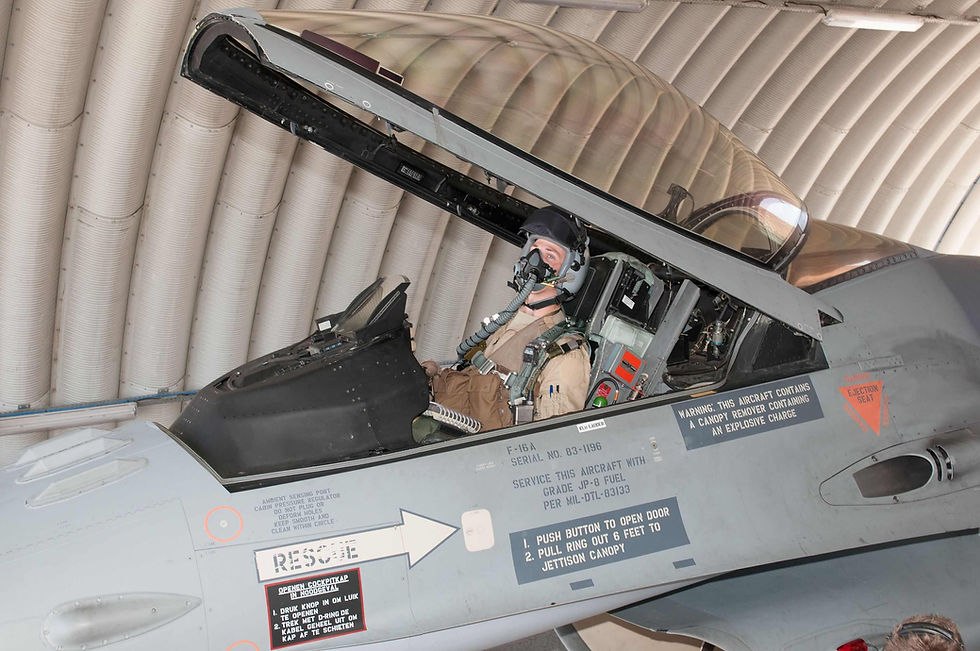2016 Dutch Vipers strike again
- Frank Visser
- Jan 6, 2018
- 3 min read
Updated: Feb 15, 2018

In 2016 the Air Task Force Middle East (ATFME) concluded its contribution to Operation Inherent Resolve, after having taken part in it for 21 months. Before the Dutch F-16s returned Frank Visser visited the detachment to report on their operations.
Operation Inherent Resolve
In 2014 the United States of America started, together with fifteen allied countries, its operations under the code name Operation Inherent Resolve in the Middle East. Its goal was to eliminate the fast advancing force of ISIL in Syria and Iraq and other fundamentalist groupings more or less affiliated to Al Qaida, such as al-Nusra. These factions took advantage of the unstable situation in Iraq and the civil war in Syria and managed to capture large parts of these countries. As the threat grew and inhumane situations occurred frequently the decision was taken to intervene with the almost exclusive force of Air Power.

Fully armed these RNLAF F-16s prepare for take-off.
At the start of Operation Inherent Resolve in 2014 several units, among which Dutch F-16s, were stationed in the bordering countries in a very short time. But also aircraft carriers of the USA and France were directed to the Mediterranean Sea, the Red Sea and the Arab and Persian Gulf. The entire operation is co-ordinated by the Combined Joint Task Force – Operation Inherent Resolve (CJTF-OIR) in Kuwait and the air operations are controlled by the Combined Air Operations Centre (CAOC) in Qatar.
Air Task Force Middle East
Early October the F-16s flew to the Middle East and thus ATFME could begin their first missions only a few days later. The first detachments were staffed in turns by ground crews of Leeuwarden and Volkel Airbase. From detachment 5 onward the ground crew was always a blend of the two airbases. During a period of 21 months seven detachments have participated in ATFME. At the start they had eight F-16AMs, all with the M6.5 configuration at their disposal. During the mission the detachment was reduced to six aircraft comprising a staff of about 180 among whom seven or eight pilots. The last detachment was led by detco pilot Lt Col Olivier. (For reasons of security only rank and first name of the staff members are mentioned in this article.) Lt Col Olivier: “Our goal was to supply the right support within the coalition forces. The great strength of ATFME was our flexibility. The CAOC in Qatar recognized and appreciated our potential and thus regularly made an appeal to us.” Thus ATFME operated as a self-supporting unit with logistic support by the Netherlands.
Photo impression of ATFME operations:





Often a comparison is made with the mission in Afghanistan, but this can only be partly maintained, as the only common ground is the heat, the dust and flying Close Air Support (CAS) missions. That is where the comparison ends, because next to CAS missions ATFME also flew Air Interdiction (AI) missions and different and new weapon systems were deployed. Such as the GBU-39 SDB (Small Diameter Bomb) and the GBU-49. Besides the use of weapon systems was much more intensive than in Afghanistan. All in all the F-16s of ATFME carried out 2,100 missions of an average duration of five hours and 1,800 times weapons were used. Lt Col Olivier: “The tactics and procedures, such as the rules of engagement, have been constantly adapted in this conflict with the goal to improve Air Power.

After almost two years Belgium has taken over the tasks of ATFME with six F-16s. The Belgian Air Force has committed itself to Operation Inherent Resolve and during the start of 2018 the RNLAF will be back and have committed themselves for another year.





Comments